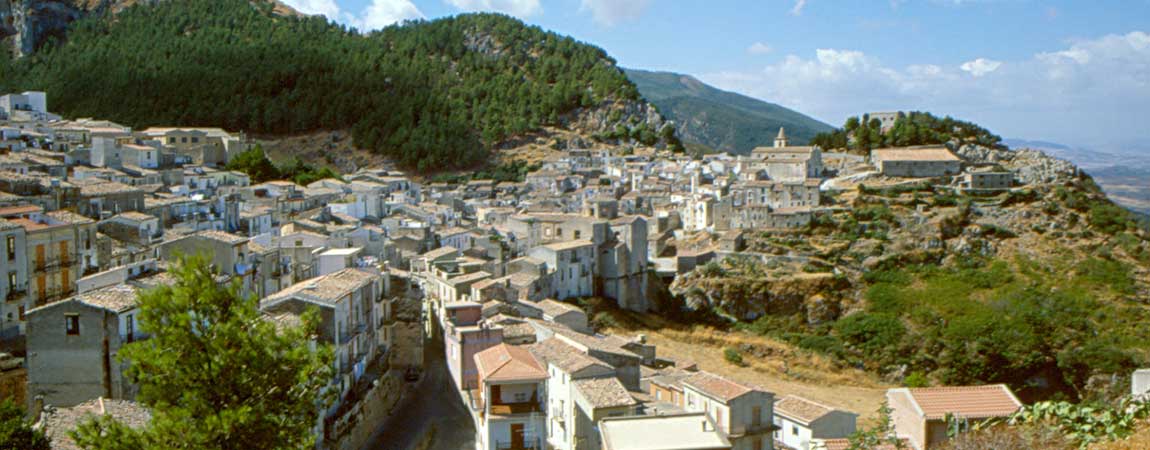
Palermo is an unmissable stop on a trip to Sicily, together with other jewels such as Syracuse, Catania, Taormina or Trapani. Yet only about 70 km from the Sicilian capital is Gratteri, a village completely lost in a distant time, where history mixes with legend, giving this medieval jewel a unique atmosphere.
Concern two steps away from one of the most beautiful places in Sicily, Cefalù: yet tourism is not a rarity in Gratteri, but only takes on a more intimate and above all eco-sustainable form.
Gratteri: what to see in the jewel of the Madonie
Il village of Gratteri stands in the heart of Madonie Park, at a height of 657 m, in the shadow of Pizzo Dipilo, in an area rich in karst phenomena such as craters, cliffs and sinkholes dug into the limestone rock over time.
The name of the village has dubious origins: it is thought to derive from Craton or Cratos, the ancient name of Pizzo Dipilo, or from the small river Crati which crosses the heart of Gratteri.
Inhabited since the Bronze Age, the territory where Gratteri stands has been inhabited since the Bronze Age, then seeing the presence of the Romans, the Arabs and the Normans, not to mention the numerous lordships that have followed one another under the Gratteri government.
Many define it as a mysterious village, probably due to the many and obscure stories legends which cloak some of the symbolic places of the town: think for example of the Head of Daphnis, which appears to be none other than the face of a petrified shepherd and alla Fountain of the Nymph. It is a fountain in the past decorated with the sculpture of a nymph, from whose breasts water flowed: it is said that the source, apparently miraculous, refers to the sad story of a virgin girl who, having seen herself portrayed in that lascivious sculpture he let himself die. The source rises in front of the Cathedral of the Archangel Michael dating back to the fourteenth century, in whose bell tower there are seven bells, one of which bears the date of 1390. In the past, in this which is considered the Mother Church of Gratteri born to guard the remains of the Ventimiglia family, four thorns from the crown of the Christ, brought here by Ruggero d'Altavilla directly from Jerusalem.
Wandering around the medieval streets of the village, between workshops where the craftsmen work lace and ceramics, but above all with small ones Inns where to taste the typical dish of Gratteri: the purpetta c'addaru, meatballs cooked on the grill flavored with fragrant bay leaves, on which the same meat is served.
From the Grattara to the Abbey of San Giorgio
After a visit to House of a Thousand Years, an Arab-like building carved into the rock located in the Arab quarter of the town (built when the Saracens lived here between 835 and 838), it is advisable to reach the scratch.
It is a karst cavity located 300 m from the center of the village, about 1000 m high, under the mass of Pizzo Dipilo. The cave can be reached from the Pianoro di San Nicola, via a winding path and inside it houses plant species such as a very rare Abiens Nebrodensis. Legend has it that this was the home of an old lady who, on the last night of the year, descended from the chimneys of houses to place gifts in the children's stockings. Everyone in Gratteri is linked to this figure, so much so that every year end a torchlight procession takes place in the middle of the night which, from the center of the town, reaches the Grattara, concluding the ritual with dances and songs around a bonfire.
At about 4 km from Gratteri is the unmissable St George's Abbey, erected in the XNUMXth century at the behest of Roger II of Altavilla, after he believed he had an apparition of St. George himself during the battle of Cerami. The building was built in full French Romanesque style and today, despite being little more than a ruin, the walls and the elegant Romanesque entrance remain intact.
The Premonstratensians, coming from France, resided in the Abbey of San Giorgio, located on the "Cammino dei Normanni". It was also chosen as a base in Sicily for the Knights of Malta, who stayed here until the early XNUMXth century. It is said that the Abbey of San Giorgio in Gratteri had kept the Holy Grail. Some venture the same origin of the name of the village from kratḗr, i.e. cup, just like the one used by Christ during the Last Supper.
If you love the most ancestral legends that float between the sacred and the profane, you cannot fail to reach the Madonie Park and the village of Gratteri, the “Terrace on the Tyrrhenian Sea".
© Image by Charles Columba, CC BY-SA 2.5 IT, via Wikimedia Commons









